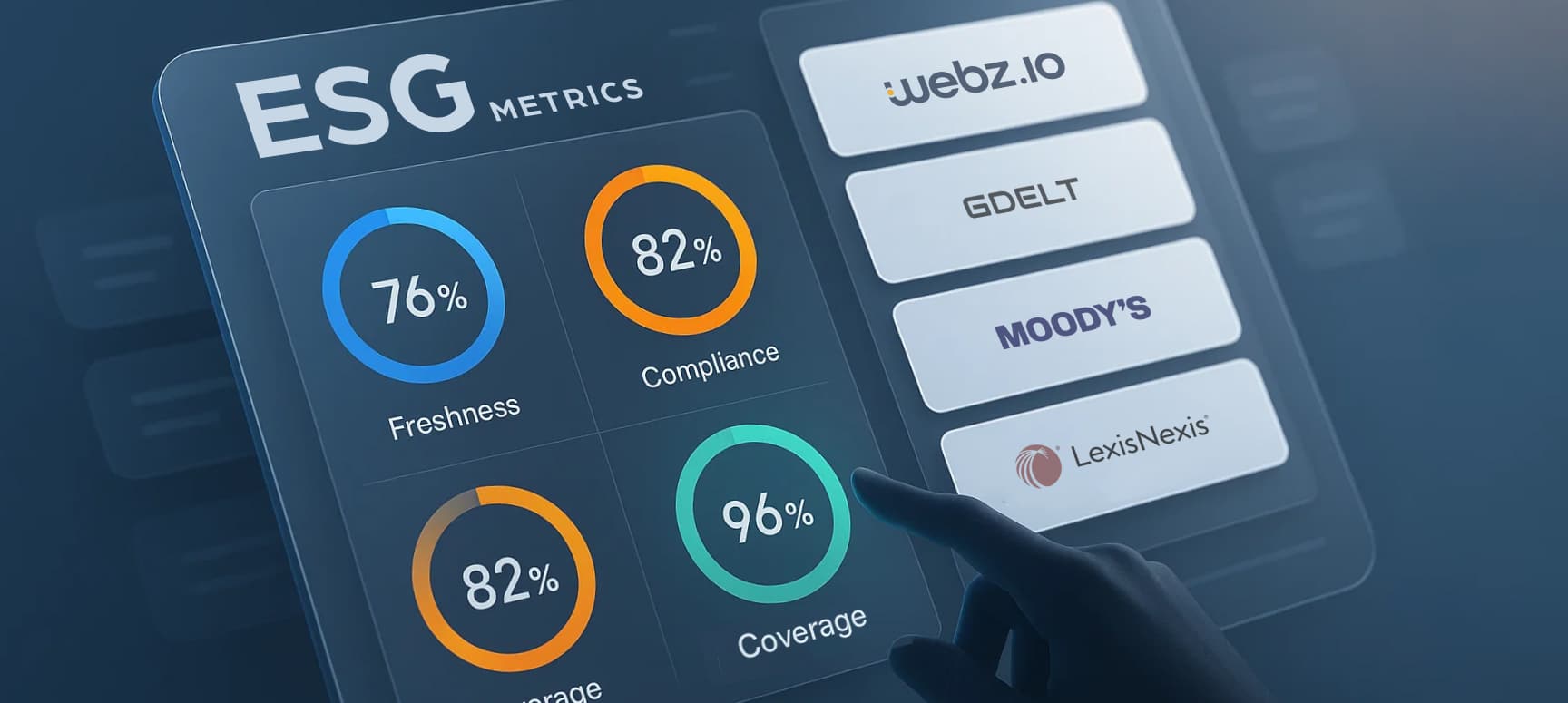How to Use a News API for Financial Monitoring
Are you looking to boost your financial monitoring or intelligence platform? If so, check out our short guide on using a news API for this purpose.

In March 2024, a single tweet claiming “Target will close stores in red states and relocate only to blue states” went viral, sparking outrage and tanking sentiment scores despite having no basis and possibly being written as satire. The misinformation spread faster than any corporate statement could correct it, inflicting real reputational damage in minutes.
Media monitoring teams depend on unified data feeds to track sophisticated, sometimes AI‑driven, misinformation campaigns like the Target tweet, putting brand reputation management and overall risk on the line. However, fragmented coverage and inconsistent metadata create critical blind spots, making it hard to reliably detect false narratives early enough for your clients to activate timely crisis responses.
Here are the 8 questions you need to ask any data provider to confirm they can detect, contextualize, and track misinformation that is targeting your customers.
Fake news can rapidly damage your company’s reputation and misinform your audience if not swiftly detected. Look for a dedicated fake news filter that supports the detection of well-known fake news sources or focuses on what they are saying. The filter should identify sources flagged as deliberately spreading false or misleading information, including sites repeatedly noted by independent fact-checkers for publishing fabricated news stories or deceptive content. This helps media intelligence solutions gain a comprehensive view of discussions around brands, competitors, and market trends, whether organic or agenda-driven.
Satire sites like The Onion and The Babylon Bee mimic news formats but distort facts for entertainment. That said, misclassifying such content as harmful misinformation floods media monitoring systems with it and wastes valuable analyst time. To deliver only factual information from credible sources, data providers should filter out satirical content. Without this, your team may have to build its own solution—a task many product teams are not equipped for. Effective filters target known parody outlets using curated domain lists and next-level AI models trained to detect sarcasm, exaggeration, and anomalous sentiment patterns. Providers should offer a dedicated satire flag with a confidence score for every article, allowing for automated exclusion or manual review and reducing noise for more accurate insights.
When major stories break, failing to track emerging narratives as they unfold can leave your organization reacting too slowly, jeopardizing credibility and eroding public trust. Your data provider’s breaking news filter should ensure you receive the most critical data fastest. It must instantly isolate news published within the last hour from top sources, providing a broad view of world events, politics, entertainment, and sports. With constant updates and seamless API integration that flags breaking news articles, this system enables you to benefit from real-time insights, comprehensive coverage, and easy integration into your existing workflows.
Timing is everything in the fight against misinformation, and knowing exactly when a story breaks is essential for measuring how fast misinformation spreads and proving the value of your platform to stakeholders. It can also help empower your team to pinpoint the start of the misinformation campaign. We’ve found that standardized ISO 8601 timestamps let you pinpoint when a story breaks, measure its spread, correlate events with precision, and validate your data against other valid sources. Without reliable time data, the information aggregated in your platform may lack the clarity needed to form effective insights, leaving response efforts reactive and undermining client trust. So, be sure to look for a provider that guarantees consistent, accurate timestamps.
Social engagement metrics, such as reactions, shares, and comments, offer early insight into how narratives spread across social networks. Early engagement on messaging apps or niche forums often precedes widespread coverage; spikes in shares, comments, and reactions on top news sites reveal which misleading stories have crossed into public consciousness. Monitoring these real-time signals and sentiment analysis helps you detect when misinformation is gaining traction, enabling a proactive response before false narratives go viral.
Misinformation is a global challenge, so your data should be too. Effective multi‑language extraction and classification with next-level AI models capable of handling linguistic nuances—including non‑Latin scripts—ensures you capture the full spectrum of narratives.
Organizations face unique challenges in each region, and local trends can be early indicators of broader misinformation campaigns. We’ve observed that global news coverage segmented by country gives you a clear snapshot of regional narratives and domain rank, highlighting where emerging risks are most pronounced. In addition to distinguishing fresh reporting from republished copy, such segmentation allows for efficient, targeted clickbait flagging, ensuring that you can access substantive coverage and address local misinformation before it spreads globally.
According to Gartner, enterprise spend on battling misinformation will surpass $30 billion by 2028, which is why there’s no time for your News API to make your team’s insights smarter than the present. Look for a solution like Webz.io’s News API that monitors global news on your behalf, delivering over 3.5 million articles per day in 170+ languages, offering 36 advanced search features, next‑generation LLM enrichment, and seamless niche source integration. We also have a dedicated CS team that works with 80% of the top media intelligence companies, helping them advance their misinformation monitoring capabilities.
To learn how our News API can help your business filter out fake news, talk to one of our experts today.

Are you looking to boost your financial monitoring or intelligence platform? If so, check out our short guide on using a news API for this purpose.

Initially used quietly by hedge funds, alternative data has since gone mainstream, with real-time news, satellite imagery, and AI-tagged sentiment analysis now serving as core inputs for serious financial monitoring. These feeds also power ESG analysis, identifying carbon hotspots, labor rights controversies, and governance red flags long before sustainability reports. Industry demand for market and […]

Aylien’s closure left a gap in the news data market. Many organizations that depended on its feeds faced disruption in monitoring risks, compliance, brand reputation and more. The reason? When news data pipelines stall, teams are less able to respond to emerging events and they lose confidence in the accuracy of their decision-making. Webz.io fills […]